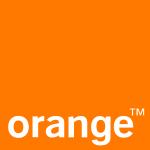Orange Labs
 |
|
| Société Anonyme | |
| Traded as |
Euronext: ORA : ORAN BIT: ORA CAC 40 Component |
| Industry | Telecommunications |
| Founded | 1988 (Privatization) |
| Headquarters | 15th arrondissement, Paris, France |
|
Area served
|
Worldwide |
|
Key people
|
Stéphane Richard (Chairman and CEO) |
| Products | Landline telephony, Mobile telephony, Fixed internet, Mobile internet, IP television, IT services, Livebox |
| Revenue |
|
|
|
|
| Profit |
|
| Total assets |
|
| Total equity |
|
| Owner |
Public float (86.6%) Government of France (13.4%) |
|
Number of employees
|
157,000 (2015) |
| Subsidiaries | |
| Website |
www www |
Orange S.A., formerly France Télécom S.A., is a French multinational telecommunications corporation. It has 256 million customers worldwide and employs 95,000 people in France, and 59,000 elsewhere. In 2015, the group had revenue of €40 billion. The company's head office is located in the 15th arrondissement of Paris. The current CEO is Stéphane Richard. The company is a component of the Euro Stoxx 50 .
Orange has been the company's main brand for mobile, landline, internet and IPTV services since 2006. It originated in 1994 when Hutchison Whampoa acquired a controlling stake in Microtel Communications during the early 1990s and rebranded it as "Orange". It became a subsidiary of Mannesmann in 1999 and was acquired by France Télécom in 2000. The company was rebranded as Orange in July 2013.
In 1792, under the French Revolution, the first communication network was developed to enable the rapid transmission of information in a warring and unsafe country. That was the optical telegraphy network of Claude Chappe.
In 1878, after the invention of the electrical telegraph and then the invention of the telephone, the French State created a Ministry of Posts and Telegraphs. Telephone Services were added to the ministry when they were nationalised in 1889. However, it was not until 1923 that the second 'T' (for 'telephones') appeared and the department of P&T became PTT.
In 1941, a General Direction of Telecommunications was created within this ministry. Then, in 1944, the National Centre of Telecommunications Studies (CNET) was created to develop the telecommunications industry in France.
In the 1970s, France tried extra hard to make up its delay on other countries with the programme "delta LP" (increasing the main lines). It was at the time when the majority of the local loop was built; that is all the cables linking the users to the operator. Moreover, with the help of French manufacturers, digital switching, the Minitel and the GSM standard were invented by engineers and CNET researchers.
...
Wikipedia
